 The COVID-19 virus is having unprecedented effects on society and individuals. I recently watched a presentation by world renowned expert on PTSD Bessel Van Der Kolk about COVID-19 and PTSD. As a mental health professional, I have taken his seminars and even had lunch with the man. His knowledge and understanding of PTSD cannot be understated and his approach to dealing with patients is something I use in my office everyday. He had some strategies for how to approach this situation with PTSD patients, but it's really good advice for everyone. One of the things he talked about was the need to keep moving. One of the reactions in a traumatic experience is the fight or flight mechanism. From an evolutionary standpoint, if we were to be attacked by a bear we would either fight it or run away from it. We are now being attacked by a virus. But instead of being able to directly fight it or run from it, we are for the most part constrained to our homes which can leave us sedentary. What can we do? Our ability to attack it or run from it has been stopped by being on lockdown. But we can take that energy and put it into other things. We can do things around the house. We can clean. We can build things. We can do at-home exercise programs such as yoga or tai-chi which have a calming effect on the body. As a family, we can do things together like cook meals. We can go outside and walk or run. Using this approach can help relieve some of the built up tension from this global crisis and put us in a better state of mind.
2 Comments
 A common New Year's resolution is to begin exercising more. As we move in the year 2020, I have noticed that several of my patients have decided to go from little or no exercise to very intense exercise training programs. These people then end up in my office injured seeking my chiropractic services. This brought to my attention an important point that I think people forget about. Part of being strong and mighty is also respecting your body and limitations of matter. I am a big supporter of exercise with my patients. Generally speaking, the more they can keep moving, the better. Peak performance, trying to reach goals in fitness to maximize a person's physical capacity and being a hard worker are all good things. And while these things can be done at any age, people's well-intentioned ambitions can blow up in their face landing them at the chiropractor or worse orthopedist if they move faster than there body will allow. These injuries occur because the body is being shocked into a state it is not accustomed to. It's a good idea to build up gradually and incrementally to reach your fitness goals. I can recommend personal trainers that can help you start working out without hurting yourself. I'm always here to help my patients or a new patient who may have injured themselves. If you have hurt yourself, professional help is right here at my office. 727-509-3760 or click above to schedule online.  Chiropractic is so important for a healthy pregnancy and easier birthing process. Why? The pelvis consists of your hips (ilium) and sacrum (what people often call their tailbone). The uterus and hence baby are positioned over these structures. The uterus is suspended by a series of ligaments that attach to the pelvis. When they are out of alignment or proper position, they will create tension and distortion of the uterus. This in turn puts strain on the baby inside the mother. It is more difficult for the then distorted baby to then pass through a distorted pelvis. This increases the likelihood of a longer labor, more difficult delivery, and c-section. The sacroiliac joint is particularly prone to instability in pregnancy because the ligaments of the body become looser to allow the baby to pass through the pelvis. Because of this, the sacroiliac joint can become out of alignment, which creates the scenario described above. I use Sacro-Occipital Technique ® (SOT ®), which is a gentle way to help stabilize the sacroiliac joint. It is also helpful for things like sciatica, which can happen during pregnancy. Why not give you and your baby the best potential for a healthy and uneventful pregnancy and childbirth? Call the office 727-509-3760 or book online by clicking the link above. 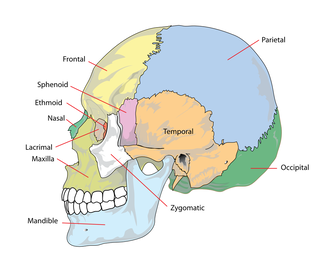 Motion of the bones of the head is very important. Motion of the bones of the head is very important. Traumatic Brain Injury (TBI) is a serious problem with far-reaching effects. Depending on the severity, it can have all sorts of effects on a person. Symptoms are vast and can include:
The effects of TBI on the motion and position of the skull are often overlooked. The cranium is made up of 22 individual bones. It was once thought that these bones were ossified or fused in adults, rendering the head like a football helmet. Historically, both chiropractors who practice craniopathy and cranial osteopaths thought differently and recognized that the bones continue to move into adulthood and that their motion can have far-reaching effects on the body. Science is now catching up, showing that there is motion in the skull even as an adult. Blows to the head, whether its a severe one or many small ones, can affect the motion in the cranial bones. This can have far-reaching effects on the body because 80% of your nervous system is housed under the cranium. This also affects flow of the cerebrospinal fluid (CSF) that surrounds the brain and spinal cord. This CSF flow brings nourishment into and removes toxins from the nervous system. Correcting cranial bone problems is a gentle procedure with light contacts on the head. My patients tell me they enjoy cranial work, particularly the results they get from it. If you or someone you know has had a TBI and would like to have your/their cranium checked, call the office at 727-509-3760 or schedule online by clicking the link above. 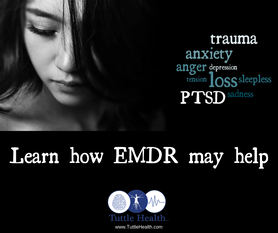 When I tell people I am a Chiropractic Physician and a licensed psychotherapist I will often get a question about how I combine my services. One of the things I do is combine Eye Movement Desensitization Reprocessing (EMDR) and Chiropractic. EMDR is a therapy used to help with conditions like PTSD, anxiety, depression, insomnia and more. It can often lead to a quicker resolution of problems than simple talk therapy. Part of EMDR is identifying where you feel the problem manifesting in the body. In cases where a patient gets stuck in the reprocessing, I can do chiropractic adjustments in those areas of the body. I find this frees up the mind to continue with the reprocessing. This is just one of the ways I combine services. Because of my education and training, I am able to combine things in ways that other health care practitioners cannot. Want to find out if you might be a good candidate for these therapies? You can call the office at 727-509-3760 or click on the link above to schedule an appointment.  In November, I had the honor of teaching at the annual Sacro Occipital Research Society International (SORSI) homecoming seminar in Denver, Colorado. The topic was the cranial ranges of motion, which is part of the practice of Chiropractic Craniopathy. This is an advanced form of additional training in chiropractic. The cranial ranges of motion are something I use every day in my practice. In my experience, when you teach something you achieve a deeper level of understanding and mastery of the subject. 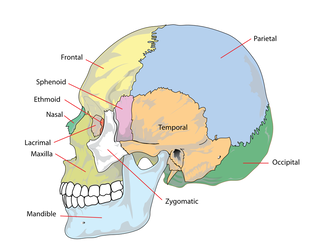 Motion in the bones of the head (cranium) occurs in both children and adults. Their motion is vital to health yet is often overlooked. Proper cranial bone motion relates to proper circulation of the cerebrospinal fluid (CSF), which brings nutrients into the brain and spinal cord and removes toxic material. CSF has now been found to interact with the immune system and the lymphatic system. Symptoms of this system not functioning properly are vast because the nervous system affects every organ and cell in the body. My patients often tell me they feel amazing when I correct imbalances in the cranium. Even people without symptoms can achieve a higher level of performance through a properly functioning cranium.  I am the only Certified Sacro-Occpitial Technic® (SOT®) practitioner in Pinellas county and only one of two in the entire Tampa bay area. Similarly, I am the only person teaching and practicing chiropractic craniopathy in these areas. Want to learn more about or experience the difference with this kind of chiropractic care? Contact my office 727-509-3760 or click above to schedule online. 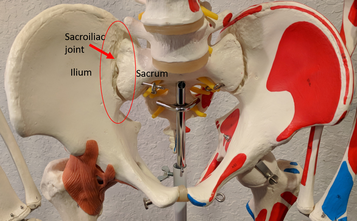 The sacroiliac joint can cause so many problems if it doesn't work right. The sacroiliac joint can cause so many problems if it doesn't work right. One thing I specialize in is the sacroiliac joint. The sacrum is at the base of your spine. Your ilium is your hips. They come together to form the sacroiliac joint. You can read older blog entries on the sacroiliac joint for a basic understanding. I recently attended another seminar which addressed the way the muscles of the body relate to this joint and how that relates to the ligaments that hold the joint together. Basically, the joint is held together by ligaments. In a sacroiliac joint injury, the ligaments are stretched. The joint becomes hyper-mobile. In an attempt to stabilize the joint, the body will activate a multitude of muscles and people will experience this as a multitude of symptoms. Some of them include:
 Image copyright Sacro Occipital Research Society International ® Image copyright Sacro Occipital Research Society International ® But there are so many muscles that attach to the pelvis that symptoms far away from the pelvis can actually be being caused by this sacroiliac joint problem. Some of these symptoms are:
Ultimately, the joint needs to be stabilized. It needs to be held together. This is contrary to much of the "standard of care" thinking in orthopedics, physical therapy and chiropractic, which focuses on mobilization of joints. Mobilizing the joint may give temporary relief, but ultimately it creates a perpetual problem with no end because the joint cannot heal. 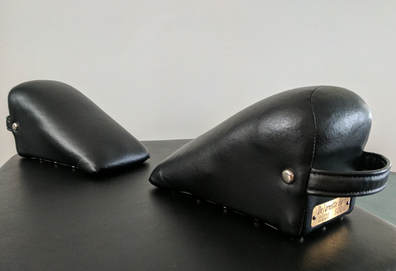 SOT® wedge-shaped blocks are placed under the pelvis to correct the sacroiliac joint. SOT® wedge-shaped blocks are placed under the pelvis to correct the sacroiliac joint. Part of the way I decrease mobility in the joint is using wedged-shaped blocks that are placed under the pelvis. They help close the joint and compress the ligaments together. Sometimes this is enough to resolve the issue. Other times, patients need extra support. This is done by having the patient wear a trochanteric belt. Worn around the pelvis, it helps hold the joint together so the muscles don't have to. The muscles are then able to relax and the pain goes away. Exercises can also be given to strengthen some of the weak muscles that contributed to the injury occurring in the first place. Healing of the joint can take 4-6 weeks. Sometimes additional nutritional support can be given to help the joint heal. So many of my patients have sacroiliac joint problems and this is one of my specialties. If you would like to know more or set up an appointment, call the office at 727-509-3760 or send an email to [email protected]. You can also schedule appointments online.  I have had tremendous success treating ADHD and ADD with Neurofeedback as a stand alone therapy. I did this before I was a chiropractor. Since becoming a chiropractor, I have started combining Neurofeedback and chiropractic care in some cases. With those cases, it seems to be that patients are responding faster to care. Why might this be? In the research I did on chiropractic effects on brain function using Sacro-Occipital Technic® (SOT®), we showed that there were changes in the frontal cortex in the brain. This is an area that relates to attention, impulsiveness and something called executive functioning. These are all things that people with ADHD can struggle with. Other research on chiropractic done by Haavik has also show that the frontal cortex of the brain is affected by chiropractic adjustments. By doing chiropractic at the same time as Neurofeedback, you are giving additional input into the brain to help it make the changes necessary to resolve the symptoms of ADHD. I like to do the chiropractic care and Neurofeedback on the same day, doing the chiropractic adjustment first and then the Neurofeedback. The idea is that you work more globally on the brain with chiropractic and then more specifically with Neurofeedback. I'm the only person in Pinellas County able to both evaluate and treat ADHD and ADD with this comprehensive approach combining my licenses as a Chiropractic Physician and a Licensed Psychotherapist. Do you or someone you know have ADHD or ADD? Are you looking for a long lasting solution without medication. Are you thinking a person might have ADHD or ADD but need to consult a professional to determine if they have this condition? If so, please give my office a call at 727-509-3760 or click above to book an appointment online. 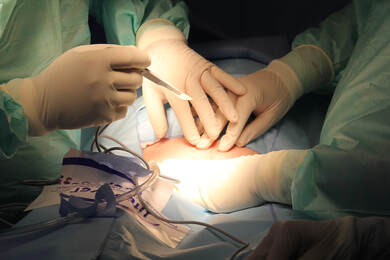 Low back surgery is done to make you feel better. But according to a 2018 study, an estimated up to 46% of low back surgeries fail (1). The odds of a second surgery working are only 30% with a 15% chance of the third surgery working and a 5% chance of the 4th surgery working. Did you know they have an insurance code now for low back surgeries that don't work out? The insurance code is "M96.1 Postlaminectomy syndrome, not elsewhere classified." There are enough of them to make a code for it. As a Chiropractic Physician, I obviously advocate avoiding surgery if possible and will do everything I can in my power to help a person avoid surgery. This includes cases of low back pain and sciatica. But what if you already had surgery and it didn't work out? Is there still help? The answer is I've had great success working with people who had low back surgery that failed to provide relief. One method I use is Cox Technic flexion distraction. This is a gentle method of increasing mobility in the spine, opening up the disc space and taking pressure off of nerves. I also use Sacro-Occipital Technic®, which offers additional low-force options to help out a part of the body that has already been traumatized. If you want to find out if you are a candidate for treatment for failed low back surgery syndrome, call my office at 727-509-3760 or schedule online by clicking on the tab above. 1. Daniel, J., Osti, O. Failed back surgery syndrome: A review article. Asian Spine Journal. 2018. https://www.ncbi.nlm.nih.gov/pmc/articles/PMC5913031/ 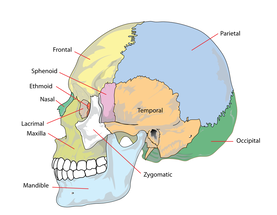 Chiropractors traditionally treat the bones in the spine. But did you know that some chiropractors also treat bones in the head? The head is also known as the cranium. Chiropractors trained and certified in Sacro-Occipital Technic® (SOT®) practice Chiropractic Craniopathy, which is the study of the motion and function of the bones in the head and how they relate to the rest of the body. I got into Chiropractic Craniopathy because I had a chiropractor who performed Chiropractic Craniopathy on me. I was amazed at how good I felt afterward and how powerful the effects were on my body. I wanted to be able to help others in this way. I knew I would be able to help more people and do more wonderful things if I learned how to do cranial work. Traditionally, the bones in the head in an adult were thought to be fused and that their function was like a football helmet. However SOT® chiropractors and osteopaths believe that the function of the cranium is greater and that there is some mobility in it, even in the adult skull. More recent research has shown this to be true. Problems that can be treated with Chiropractic Craniopathy include:
This is a partial list of what can be treated with Chiropractic Craniopathy because the cranium houses the brain and the brain controls the rest of the body. So cranial work can get results affecting areas distant from the head. I have resolved previously unresolved cases of low back pain with cranial work. I've even fixed stubborn ankle problems by fixing the head! Sometimes chiropractic adjustments won't "hold" because of an unresolved cranial issue. With all my patients, I make sure the cranium is functioning properly as part of my routine session so that patients can get better as soon as possible. I'm often asked if this technique hurts. Cranial work is gentle. It does not involved cracking or popping of joints. Most of my patients really enjoy cranial work. Have you had your cranium checked? Cranial bone dysfunction can have profound effects on your health. Do you have a problem that has been unresponsive to other forms of chiropractic care? Contact the office at 727-509-3760 to book an appointment or book online by clicking on the tab above. |
AuthorI'm a Chiropractic Physician, Psychotherapist and researcher. I'm interested in helping people live their lives to their full potential. That could be simply without pain. Or it could be without more complicated physical or mental health problems. Or it could be getting help in making changes in their life so that they can achieve their dreams. Archives
June 2023
Categories |
 RSS Feed
RSS Feed